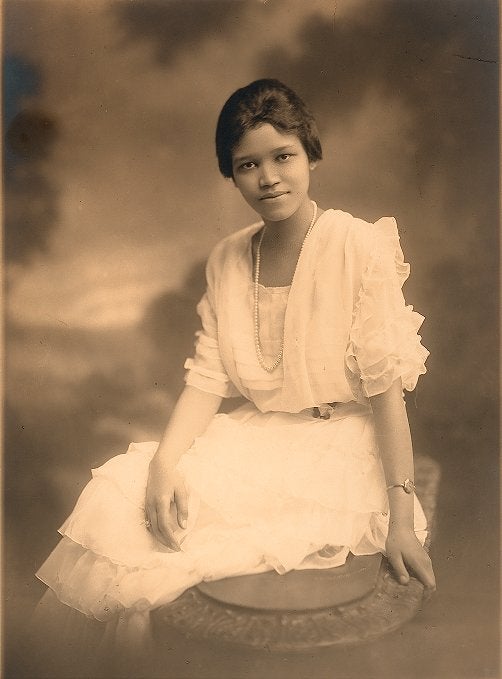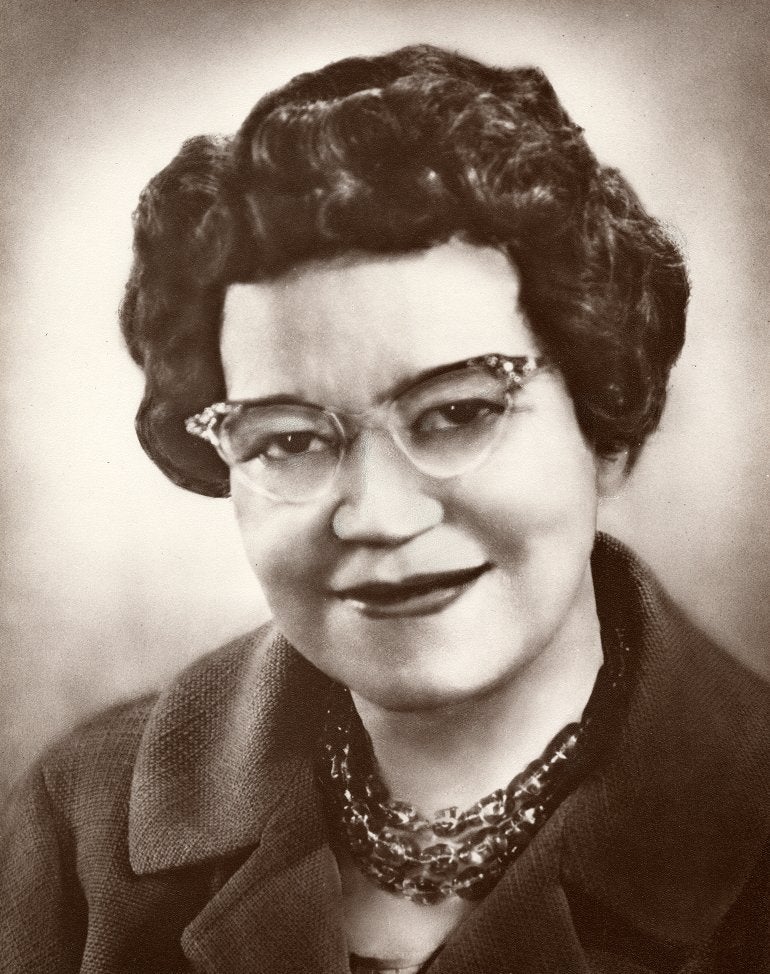Born in Philadelphia in 1898, the youngest of three children, Sadie Tanner Mossell Alexander (B.S., 1918; A.M., 1919; Ph.D., 1921; LL.B., 1927) is a member of two distinguished families.
Her maternal grandfather was Benjamin Tucker Tanner (1835-1923), a Bishop in the African Methodist Episcopal Church. Bishop Tanner had seven children, the best known of whom is the painter Henry O. Tanner (1859-1937). Another daughter of Bishop Tanner, Hallie Tanner Johnson, became a social worker and physician and established the Nurses’ School and Hospital at Tuskegee Institute in Alabama.
Sadie Tanner Mossell’s father, Aaron A. Mossell (1863-1951) (LL.B. 1888), was the first African-American to graduate from Penn’s Law School. Her uncle, Nathan Francis Mossell (1856-1946) (M.D. 1882) was the first African-American to graduate from Penn’s Medical School. In 1895 Dr. Mossell was a co-founder of the Frederick Douglass Hospital, which later merged with Mercy Hospital to form Mercy-Douglass. Sadie’s paternal grandfather, Aaron Mossell, Sr., had established a successful brick-making business in Lockport, New York.
When Sadie was a child, her mother and siblings frequently alternated residence between Washington, D.C., and Philadelphia. When she reached high school, she went to live in Washington with her uncle, Lewis Baxter Moore (Ph.D., 1896) who was dean at Howard University and the husband of her mother’s sister, Sadie Elizabeth Tanner. She attended the M Street High School in Washington and graduated in 1915.
She then attended the School of Education at the University of Pennsylvania, graduating in 1918. Following her college graduation, she entered the Graduate School at Penn to study economics. In 1921, she became one of the first three Black women in the U.S. to obtain a Ph.D.
Despite her academic achievements, she had difficulty finding employment in Philadelphia and went to work for the Black-owned North Carolina Mutual Life Insurance Company in Durham, remaining there for two years. In 1923, shortly after Raymond Pace Alexander was admitted to the Bar and opened his practice, she returned to Philadelphia to be married.
The following year, in the fall of 1924, she entered the University of Pennsylvania Law School. She became the first Black woman to graduate from that institution and the first Black woman admitted to the Pennsylvania Bar in 1927. Thereupon, she joined her husband’s practice, specializing in estate and family law. She served as Secretary to the National Bar Association.
She was appointed Assistant City Solicitor for the City of Philadelphia and held that position from 1928 to 1930 and from 1934 to 1938. From that time forward, she served on numerous boards, committees, and commissions and held office in many local and national organizations. Among her most notable activities was her service on President Truman’s Committee on Human Rights in 1947 and on the Commission on Human Relations of the City of Philadelphia from 1952 until 1968. She continued her employment in her husband’s firm from 1927 until 1959, when he was named to the Court of Common Pleas in Philadelphia. She subsequently practiced independently until 1976, when she joined the firm of Atkinson, Myers, and Archie in the capacity of counsel. Her national stature was recognized when President Jimmy Carter appointed her chair of the White House Conference on Aging in 1978; she was removed from this committee by Ronald Reagan in 1981. She retired from practice and from public life generally in 1982. Mrs. Alexander died in 1989 and is survived by two daughters, Mary Elizabeth Alexander Brown (1934 -) and Rae Pace Alexander Minter (1937 -).


